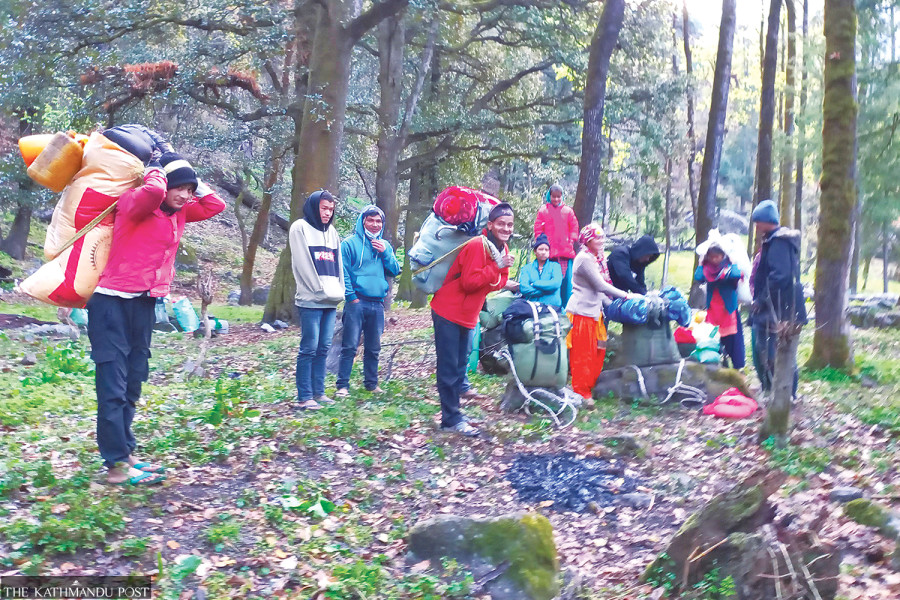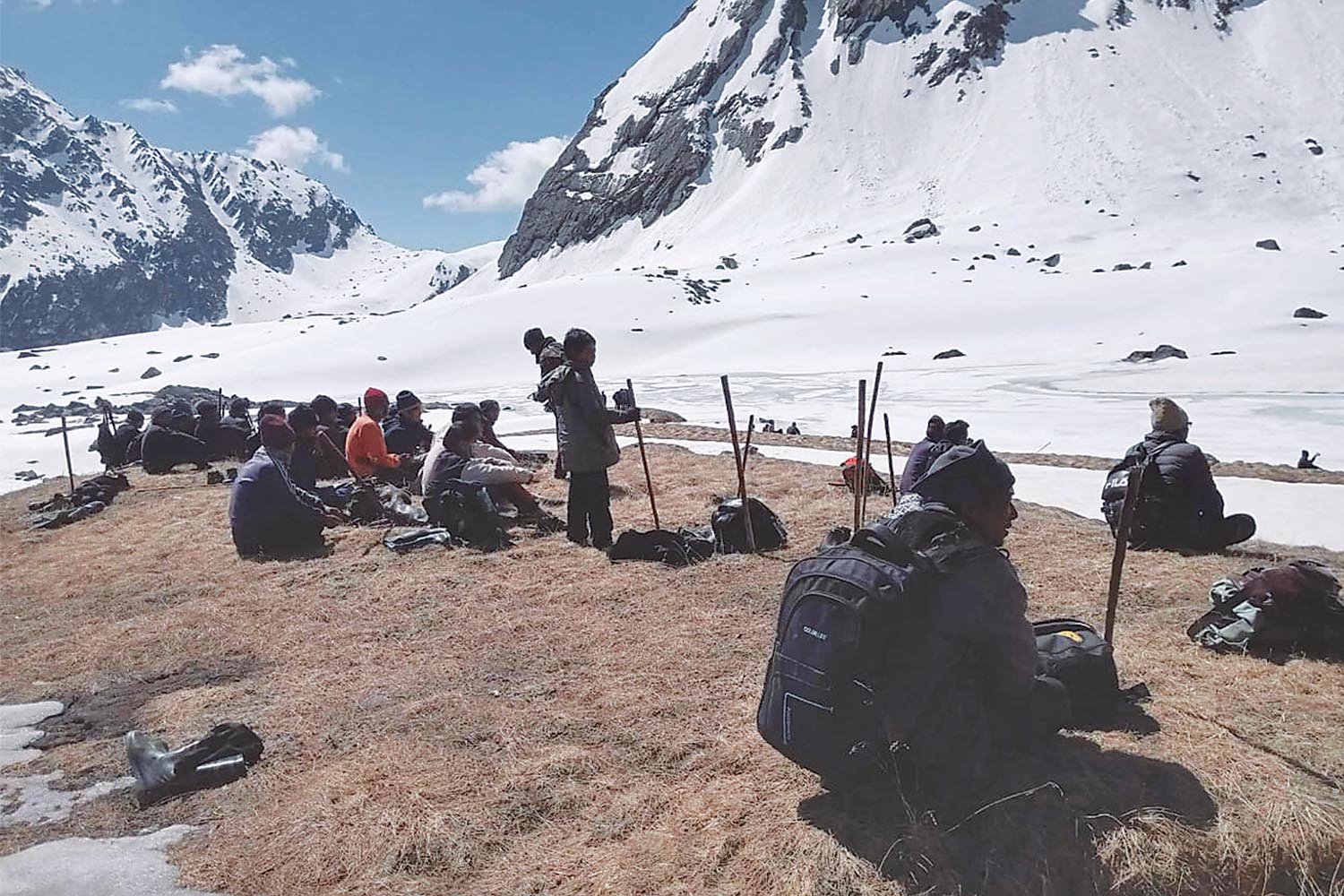National
People flock to Bajhang highlands for yarsagumba harvest
Local markets are buzzing with activity as people shop for stay in the mountains for months. Yarsagumba fetches up to Rs2 million a kilo in the district.
Basant Pratap Singh
Anjana Bohara from Surma Rural Municipality in the mountain district of Bajhang had headed to the highlands on April 14 to collect yarsagumba (Ophiocordyceps sinensis), a caterpillar fungus prized for its purported medicinal properties. But she returned home after a few days to cast her vote in the April 27 by-election in the district.
Yarsagumba is a parasitic fungus that grows within a variety of moth caterpillars in the Himalayan region. Locally called yarsa in short, the fungus kills the caterpillar and emerges from the dead body as a thin stem. Yarsagumba is in high demand in a number of countries in East Asia, particularly China.
Bohara said that typically during the yarsagumba collection season, people remain in the highlands searching and gathering the fungus for three months or more, but this year, the routine was interrupted by the by-election as people returned to show support for their election candidates.
After casting her vote on Saturday, Bohara stayed in Surma waiting for the election results on Monday and then on Tuesday, along with her relatives headed for Dhanseri highlands to resume yarsa collection.
“All those who had returned for the election are going back to the highlands. Even the elderly and children, albeit in smaller numbers, climb mountains to collect yarsa. They will stay in the uplands until mid-July,” said Bohara. “Although the routes such as Parti and Bhaiseodar leading to Dhanseri Mountain are covered in several feet of thick snow, this does not deter the collectors because yarsa fetches good prices,” Bohora added.
Like Bohara, after voting in the by-election of the Sudurpaschim provincial assembly held on April 27, the residents of the northern parts of the district are returning to the highlands.
Almost all the villages of Talkot, Surma, Saipal, Masta, Chhabis Pathibhera, and Durgathali rural municipalities and, Bungal and Jaya Prithvi municipalities of the district look like deserted villages during the yarsa harvesting months.
“We used to stay for three months in the highlands, but due to the by-election, we stayed at home for a month; otherwise, we would have already collected yarsagumba worth Rs200,000 to Rs300,000. My family has just started climbing the mountains, and we will stay there for two months,” said Asauji Bohara, a local of Saipal. People take along all necessary logistics including tarps, food and clothes. Some people also take their livestock along to lighten the load.
Ran Bahadur Khadka from Khaptadchhanna Rural Municipality who operates an eatery in the yarsa collection area said people who reached the highlands early this season have already collected a fair amount of yarsagumba in a short period.

According to the Election Commission, there are a total of 61,748 registered voters in Bajhang, but only 30,337 people voted in the by-election. Surendra Bohara, the chairman of ward 2 of Surma Rural Municipality attributed the low voter turnout to the yarsa season. Also, many people employed in cities in other districts did not come to vote, he said.
Manbir Bohara, chairman of Saipal Rural Municipality, said many people reached the highlands as early as March. Traders said yarsagumba fetches between Rs 1.7 million and Rs 2 million per kilogram in the district.
“All the villages and settlements in the rural municipality are slowly emptying, and in a couple of days everybody will be gone except those who cannot travel and live in extreme cold and altitude. One can tell what the craze of yarsa is here just by looking at the crowds in the shops in the district headquarters in Chainpur and the local market where people are buying consumables to stay in the highlands,” said Manbir.
Laxmi KC, a local shop owner in Chainpur, said that every year during the yarsa harvesting season, all shops are packed with people, and in her shop, each person spends around Rs25,000 on clothes.
“Not only the clothes shops, but those selling dairy products, groceries, and pharmacies, among others, are bustling with people. The shop owners here earn more in this season than they do all year long,” said KC.
Meanwhile, local officials have expressed concerns saying the large influx of people heading to the highlands to collect yarsa and living there for months has started to affect the environment and ecosystem of the mountain region.
Dolma Tamang, vice chairman of Saipal Rural Municipality, said that although the locals have found a way to earn and make a living out of it, at the same time, their activities have also been affecting the environment.
“It is important to control unnecessary human activities in the collection area in order to stop deforestation, forest fires, poaching, and the collection of protected herbs. Due to increasing human activities in the mountains, littering has become a major concern currently,” said Dolma. “A joint team of rural municipal authorities and police has been formed, and surveillance has been started to stop and control the damage caused by humans in the mountains. Not only our rural municipality, but other local units are also making efforts to stop and control unnecessary human activities in the mountain,” Dolma added.




 22.12°C Kathmandu
22.12°C Kathmandu












